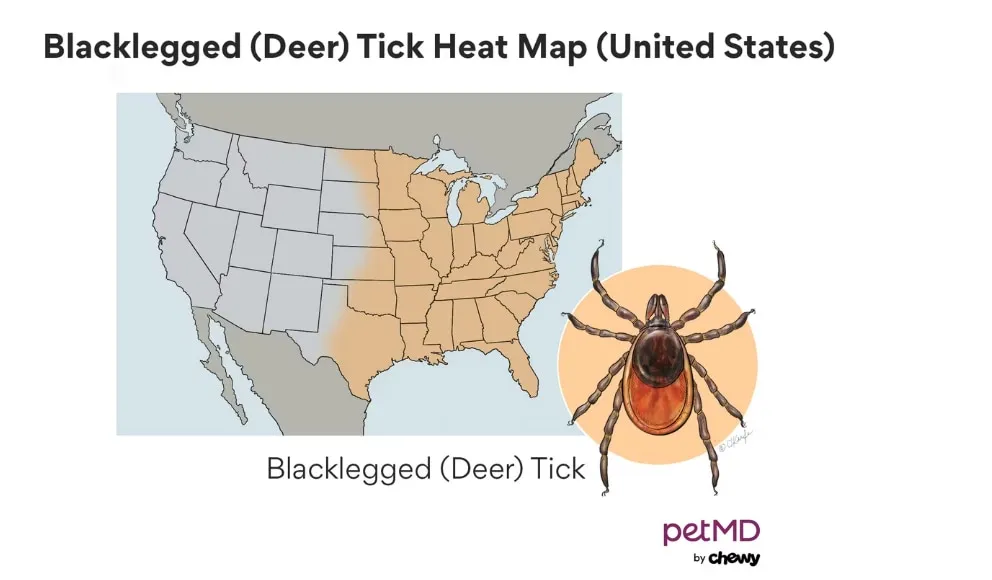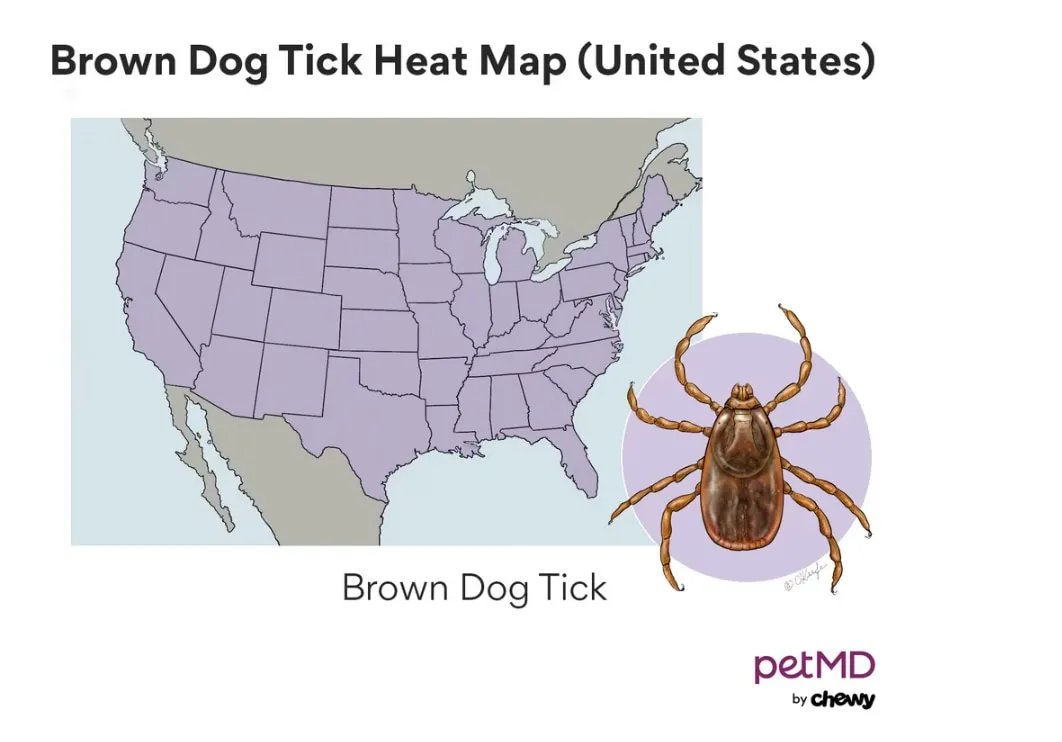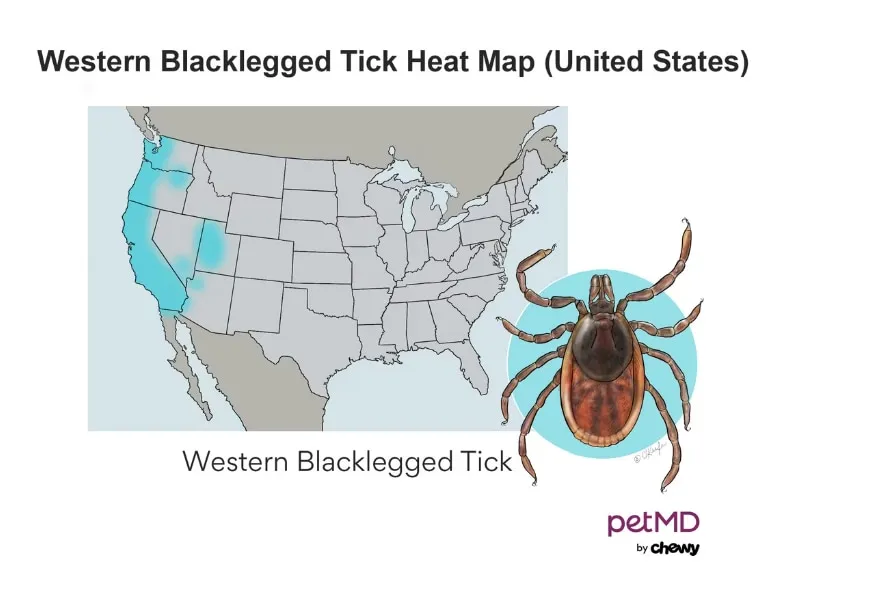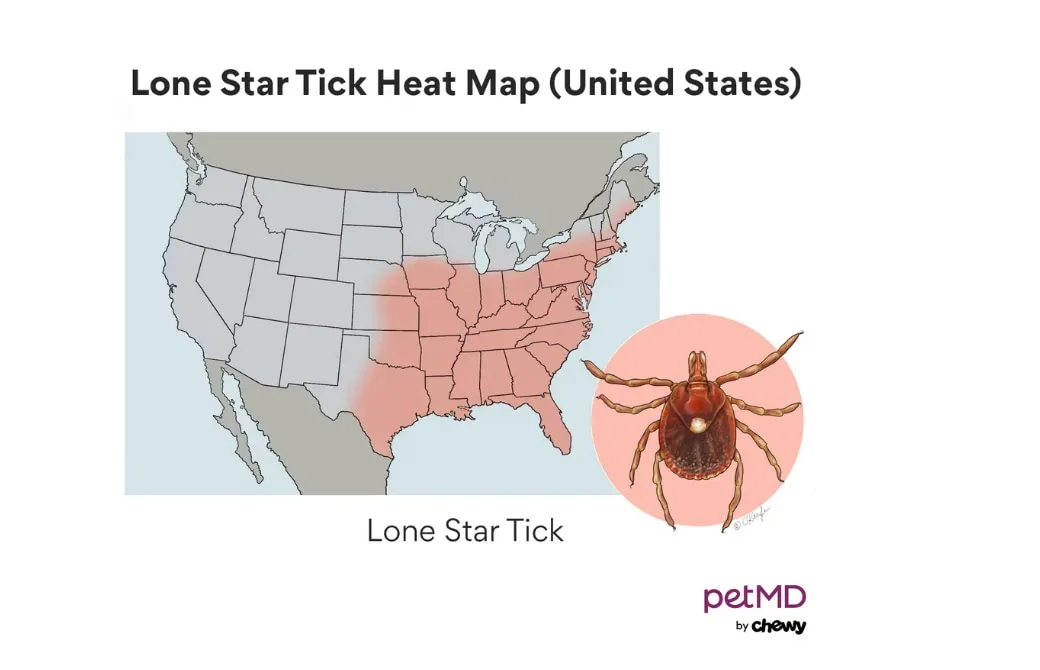Preventative care is paramount to maintaining your dog’s health and happiness. Among the most critical aspects of this care is effective parasite control, particularly against fleas and ticks. While prescription options are widely available, many pet parents seek reliable over the counter flea medicine for dogs to protect their canine companions. This comprehensive guide will help you understand the importance of flea prevention, the nuances of choosing an over-the-counter solution, and popular products available without a veterinary prescription, ensuring your furry friend stays pest-free and healthy.
Why is Flea and Tick Prevention Essential for Your Dog?
Fleas and ticks are external parasites (ectoparasites) that live on a host, feeding on their blood. These minuscule invaders pose significant threats to your dog’s well-being and can even affect human health.
The direct impacts on your dog can be severe:
- Allergies and Dermatitis: Flea saliva can trigger intense allergic reactions, leading to Flea Allergy Dermatitis (FAD), characterized by severe itching, skin irritation, hair loss, and secondary bacterial infections.
- Anemia: Heavy flea infestations, especially in puppies or small dogs, can cause significant blood loss, leading to anemia, which can be life-threatening if left untreated.
- Itching and Discomfort: Constant itching from flea bites causes distress, disrupting sleep and overall quality of life for your dog.
- Infections: Open wounds from scratching can become infected, requiring veterinary intervention.
- Tick-borne Diseases: Tick bites can transmit various serious diseases, including Lyme disease, Anaplasmosis, Ehrlichiosis, Rocky Mountain Spotted Fever, and Babesiosis. These diseases can cause symptoms ranging from lameness and fever to organ damage and paralysis, and in some cases, can be fatal. Tick bites can also lead to localized infections and abscesses.
Beyond the direct harm to your dog, these parasites can harbor and spread diseases that can impact humans, such as Lyme disease and Rocky Mountain Spotted Fever. This zoonotic potential underscores the critical need for consistent flea and tick control to protect both your pet and your family.
When Do Dogs Need Flea and Tick Prevention?
Fleas and ticks are incredibly resilient and can thrive in diverse environments across many geographical areas. They are not merely seasonal nuisances; flea eggs and larvae can overwinter in homes, and some tick species remain active even in colder temperatures.
Given their hardy nature and the serious diseases they transmit, it is vital to start flea and tick prevention for your dog as early as 8 weeks of age, following product guidelines. More importantly, this prevention should be maintained year-round throughout your dog’s entire life, regardless of climate or outdoor activity levels. Consistent, uninterrupted prevention is the most effective strategy to keep your dog safe from these persistent pests.
Choosing a Flea and Tick Combination Medicine for Dogs
The market offers a wide array of products designed to protect your dog from parasites. These products function in different ways: some are pesticides that kill parasites, others are repellents that deter them, and some are growth inhibitors that disrupt the parasite life cycle. Each type targets pests at various life stages to prevent infestations.
While some products are effective only against fleas, many modern preventatives are combination medicines. These contain multiple active ingredients to combat a broader spectrum of pests, including fleas, various tick species, and sometimes other internal parasites like heartworms, roundworms, hookworms, and even mites. For example, comprehensive options like Credelio Quattro offer broad-spectrum protection against six types of parasites: fleas, ticks, heartworms, roundworms, hookworms, and tapeworms.
Before selecting any flea and tick medication, whether prescription or best flea treatment for dogs without a vet prescription, always consult with your veterinarian. They can provide personalized advice based on your dog’s specific needs, health history, and local parasite risks. When reviewing product labels, ensure you discuss the following with your vet:
- Correct Species and Weight: Verify the product is specifically formulated for dogs and falls within your dog’s correct weight range. Using a product designed for cats or for a different weight class can be ineffective or even dangerous.
- Parasite Coverage: Confirm the product protects against the specific parasites prevalent in your area (fleas, specific tick species, heartworms, etc.).
- Administration Guidelines: Understand if the product should be given with food, how often it needs to be administered, and how long it takes to become effective.
- Post-Application Care: Know how soon you can bathe your pet after applying topical treatments, as water can affect efficacy.
- Safety Concerns and Adverse Reactions: Discuss any potential side effects, contraindications, or what steps to take if your dog has an adverse reaction.
Beyond these crucial points, several other factors influence the best choice for your dog:
1. Application Method
Flea and tick preventatives typically come in two main forms:
- Oral: These are chewable tablets that your dog ingests, often flavored to resemble a treat. Oral treatments are convenient for many dog parents, as they are less messy than topicals and not affected by bathing or swimming. However, it’s important to ensure your dog consumes the entire tablet and doesn’t vomit it up before it can be absorbed.
- Topical: These are liquid solutions applied directly to the skin, usually between the shoulder blades or down the back. Topical preventatives are excellent for picky eaters or dogs with sensitive stomachs. However, caution is needed in households with small children or other pets, as they should not touch or lick the treated area before it dries. Topical treatments may also be less effective for dogs that swim frequently or require regular bathing, as water can reduce their efficacy.
2. Geography
The prevalence and types of local parasite populations, including various fleas and ticks, differ significantly by geographic region. The Companion Animal Parasite Council (CAPC) is an invaluable resource that provides up-to-date parasite forecasts and identifies which parasites are endemic to your area. Checking this resource ensures that the flea and tick product you select offers comprehensive protection against the specific threats your dog might encounter locally. This regional awareness is crucial for effective prevention.
3. Access to the Outdoors
Consider the types of outdoor environments where your dog spends time. Areas like dog parks, hiking trails, dense wooded regions, city parks, overgrown bushes, and even your own backyard can all be havens for fleas and ticks. If your dog frequently explores wooded areas or socializes in spaces shared by many other animals, their risk of parasite exposure is significantly higher.
 Deer Tick (Ixodes scapularis) on dog's fur, a common vector for Lyme disease
Deer Tick (Ixodes scapularis) on dog's fur, a common vector for Lyme disease
However, even if your dog primarily stays indoors, fleas can still find their way into your home through window screens, on other pets that venture outside, or even hitchhiking on your clothes and shoes. Veterinarians consistently recommend year-round flea and tick prevention for all dogs, regardless of how much time they spend outdoors, to ensure continuous protection.
4. MDR-1 Gene
Certain dog breeds, such as Collies, Australian Shepherds, and Shetland Sheepdogs, may possess a specific genetic mutation known as the MDR-1 gene. This mutation can impair their ability to metabolize and break down certain medications, potentially leading to adverse reactions.
Many veterinarians advise testing dogs for the MDR-1 gene, especially those breeds known to be affected. While some parasite preventative manufacturers have specifically tested their products for safety in dogs with the MDR-1 mutation and reported no adverse effects, it is always best to discuss this concern with your vet. They can help you choose a safe and effective product if your dog is an affected breed or has tested positive for the MDR-1 gene.
5. Lifestyle
While no specific dog breed is inherently more susceptible to acquiring fleas or ticks than others, a dog’s lifestyle and typical activities can significantly influence their risk of exposure. For example, working, herding, and hunting dogs often spend considerable time in fields, forests, or other outdoor environments where parasites are abundant. In contrast, companion dogs that spend most of their days indoors, venturing out only for brief walks, typically have a lower exposure risk.
Despite differing risk levels, consistent preventative measures are recommended for all dogs, as even minimal outdoor exposure can lead to an infestation.
6. Life Stage
When choosing an over the counter flea medicine for dogs, your dog’s age and size are critical factors. Puppies and small dog breeds require products specifically formulated for their weight and developmental stage. Most flea and tick preventatives have a minimum age requirement, commonly 8 weeks, but always refer to the package insert for precise confirmation.
For very young puppies, such as those as young as 6 weeks, specialized products like Revolution Topical Solution for Kittens and Puppies are specifically designed to be safe and effective. Always consult your veterinarian to ensure the product is appropriate for your dog’s current age and weight to avoid under-dosing or potential toxicity.
7. Medical Conditions
Certain medical conditions can influence the choice of flea and tick prevention. For instance, some classes of preventatives, known as isoxazolines (e.g., found in Bravecto, Credelio, Nexgard, Simparica Trio), should be used with extreme caution in dogs with a history of seizures or other neurologic diseases. These medications may potentially lower the seizure threshold in susceptible dogs, increasing the risk of breakthrough seizures.
Regardless of whether you choose an over-the-counter or prescription product, it is imperative to have a thorough discussion with your veterinarian if:
- Your dog has previously experienced an allergic reaction to any medication.
- Your dog is currently sick, recovering from an illness, or underweight.
- Your dog is pregnant, nursing, or planned for breeding in the near future, as medication safety for these conditions can differ.
Your vet can assess these factors and recommend the safest and most effective option for your dog’s unique health profile.
Over-the-Counter vs. Prescription Flea and Tick Medicine
Understanding the difference between over-the-counter (OTC) and prescription flea and tick medications is crucial for making an informed decision for your dog’s health.
Over-the-Counter Flea and Tick Products
Over-the-counter flea and tick preventatives do not require a veterinary prescription or a prior established veterinary-client-patient relationship. These products are readily available for purchase online, in pet supply stores, and various retail outlets. They offer convenience and are often a more budget-friendly option.
Many OTC options can be highly effective when chosen and used correctly. However, their accessibility means pet owners must take extra responsibility to ensure the chosen product is appropriate and safe for their specific dog.
If you opt for an over the counter flea medicine for dogs, it is still highly recommended to check in with your veterinarian. They can confirm its safety and efficacy based on your dog’s health profile, local parasite risks, and potential interactions with other medications.
Prescription Flea and Tick Products
Prescription flea and tick preventatives require authorization from your veterinarian. These products often contain newer, more potent active ingredients and typically undergo more rigorous testing. While they might carry a slightly higher cost than many OTC alternatives, most veterinarians generally recommend prescription products. This is largely due to their proven effectiveness, broader spectrum of protection, and often a higher safety profile under veterinary guidance. The veterinarian can also monitor for side effects and ensure the product is suitable for your dog’s specific medical history.
Popular Over-the-Counter Dog Flea and Tick Prevention Products
Many effective over-the-counter options exist to protect your dog from fleas and ticks. Always read the label carefully and consult your veterinarian, even for non-prescription products.
Advantage II (Topical)
Advantage II is a monthly topical solution containing imidacloprid and pyriproxyfen. This combination acts rapidly to kill all flea life stages—eggs, larvae, and adults—within hours, and also targets chewing lice. It’s a fast-acting solution for existing flea infestations.
- Key Protection: Fleas and chewing lice.
- Important Note: Does not provide tick prevention.
- Usage: For dogs and puppies 7 weeks and older, weighing more than 3 pounds.
Frontline Gold (Topical)
Frontline Gold is a monthly topical product combining fipronil, (s)-methoprene, and pyriproxyfen. This triple-action formula offers rapid killing power against fleas, ticks, and chewing lice. It’s designed for quick relief and sustained protection.
- Key Protection: Fleas, ticks, and chewing lice.
- Usage: For dogs and puppies 8 weeks and older, weighing more than 5 pounds.
Frontline Plus (Topical)
Similar to Frontline Gold, Frontline Plus is a monthly topical solution with fipronil and (s)-methoprene. This duo effectively kills fleas, ticks, and chewing lice. While fast-acting, its speed might be slightly less than Frontline Gold.
- Key Protection: Fleas, ticks, and chewing lice.
- Usage: For dogs and puppies 8 weeks and older, weighing more than 5 pounds.
Frontline Shield (Topical)
Frontline Shield is a monthly topical preventative that includes fipronil, permethrin, and pyriproxyfen. This powerful combination not only kills fleas, ticks, and chewing lice but also repels mosquitoes, stable flies, and ticks. It begins killing fleas in five minutes and ticks within one hour.
- Key Protection: Kills fleas, ticks, chewing lice, stable flies. Repels mosquitoes, stable flies, and ticks.
- Usage: For dogs and puppies 9 weeks and older, weighing more than 5 pounds.
- Critical Warning: This product is highly toxic to cats. Extreme caution or avoidance is necessary in households with cats to prevent accidental exposure.
K9 Advantix II (Topical)
K9 Advantix II is a monthly topical product featuring imidacloprid, permethrin, and pyriproxyfen. This formulation is designed to repel and kill fleas, ticks, mosquitoes, and chewing lice, and also repels biting flies. It starts killing parasites within hours.
- Key Protection: Repels and kills fleas, ticks, mosquitoes, chewing lice. Repels biting flies.
- Usage: For dogs and puppies 7 weeks and older, weighing more than 4 pounds.
- Critical Warning: This product is also highly toxic to cats. Avoidance or extreme caution is crucial in multi-pet households.
 American Dog Tick (Dermacentor variabilis) on a blade of grass, waiting for a host
American Dog Tick (Dermacentor variabilis) on a blade of grass, waiting for a host
Onguard Plus (Topical)
Onguard Plus is a monthly topical solution containing fipronil and (s)-methoprene. This combination targets and kills all fleas, ticks, sarcoptic mange, and chewing lice, offering broad-spectrum external parasite control.
- Key Protection: Fleas, ticks, sarcoptic mange, chewing lice.
- Usage: For dogs and puppies 8 weeks and older, weighing more than 5 pounds.
Seresto Collar (Collar)
The Seresto collar provides long-lasting protection, using imidacloprid and flumethrin to kill and repel fleas and ticks for up to eight months. Fleas are typically killed within 24 hours and ticks within 48 hours of application.
- Key Protection: Kills and repels fleas and ticks.
- Usage: For dogs and puppies 7 weeks and older.
- Important Note: If a dog is bathed or swims frequently (more than once per month), the efficacy of the collar may decrease, potentially requiring replacement as often as every five months.
Vectra 3D (Topical)
Vectra 3D is a monthly topical product with dinitefuran, permethrin, and pyriproxyfen. This potent combination effectively repels and kills fleas, ticks, mosquitoes, chewing lice, sand flies, biting flies, and some mites, offering very broad protection. It begins killing parasites within hours.
- Key Protection: Repels and kills fleas, ticks, mosquitoes, chewing lice, sand flies, biting flies, and some mites.
- Usage: For dogs and puppies 8 weeks and older, weighing more than 5 pounds.
- Critical Warning: This product is highly toxic to cats. Extreme caution or avoidance is essential in households with cats.
Popular Prescription Dog Flea and Tick Prevention Products
While this article focuses on over the counter flea medicine for dogs, it’s important to acknowledge some widely used prescription options for comparison and comprehensive understanding of available solutions. These often offer broader protection and are administered under veterinary guidance.
Bravecto (Oral/Topical)
Bravecto is available as a chewable tablet or a topical solution. Its active ingredient, fluralaner (an isoxazoline), starts killing fleas within two hours and ticks within 12 hours, providing protection for up to 12 weeks. It is also effective against demodectic, sarcoptic mange, and ear mites.
- Caution: As an isoxazoline, use with caution in dogs with a history of seizures, epilepsy, or neurologic disorders.
Comfortis (Oral)
Comfortis is a chewable tablet containing spinosad, an active ingredient specifically targeting fleas. It is fast-acting, killing fleas within 30 minutes of dosing.
- Key Protection: Fleas only.
- Usage: Dogs and puppies 14 weeks or older and weighing over 5 pounds. Typically administered monthly.
 Brown Dog Tick (Rhipicephalus sanguineus) on light colored dog fur, commonly infests kennels and homes
Brown Dog Tick (Rhipicephalus sanguineus) on light colored dog fur, commonly infests kennels and homes
Credelio (Oral)
Credelio is a chewable tablet with lotilaner, another isoxazoline. It treats fleas and ticks, starting to kill fleas within four hours.
- Usage: Dogs and puppies 8 weeks and older, weighing more than 4.4 pounds. Administered monthly.
- Caution: As an isoxazoline, use with caution in dogs with a history of seizures, epilepsy, or neurologic disorders.
Credelio Quattro (Oral)
Building on Credelio, Credelio Quattro is a chewable tablet combining lotilaner (for fleas and ticks) with moxidectin (for heartworms, hookworms, roundworms), praziquantel (for two species of tapeworms), and pyrantel (for hookworms and roundworms). It offers very broad-spectrum internal and external parasite control.
- Usage: Dogs and puppies 8 weeks and older, weighing at least 3.3 pounds. Administered monthly.
Nexgard (Oral)
Nexgard is a chewable tablet containing afoxolaner, an isoxazoline that is effective against fleas, deer ticks, American dog ticks, brown dog ticks, and Lone Star ticks. It also provides extra-label treatment for sarcoptic and demodectic mange. Nexgard starts killing fleas within four hours and ticks within 48 hours.
- Usage: Dogs and puppies 8 weeks and older, weighing more than 4 pounds. Administered monthly.
- Caution: As an isoxazoline, use with caution in dogs with a history of seizures, epilepsy, or neurologic disorders.
Simparica Trio (Oral)
Simparica Trio is a chewable tablet that combines sarolaner (an isoxazoline for fleas and ticks), moxidectin (for roundworms, hookworms, and heartworm prevention), and pyrantel (for roundworms and hookworms). It also has extra-label uses for demodectic mange, sarcoptic mange, and ear mites. It begins killing fleas and ticks within 12 hours.
- Usage: Dogs and puppies 8 weeks and older, weighing more than 2.8 pounds. Administered monthly.
- Caution: As an isoxazoline, use with caution in dogs with a history of seizures, epilepsy, or neurologic disorders.
 Lone Star Tick (Amblyomma americanum) with its characteristic white spot, found in various habitats
Lone Star Tick (Amblyomma americanum) with its characteristic white spot, found in various habitats
Trifexis (Oral)
Trifexis is a chewable tablet containing spinosad and milbemycin oxime. It is effective against fleas, hookworms, roundworms, and whipworms, while also preventing heartworm disease. It is a fast-acting drug, beginning to kill fleas within 30 minutes.
- Key Protection: Fleas, hookworms, roundworms, whipworms, and heartworm prevention.
- Important Note: Does not provide protection from ticks.
- Usage: Dogs and puppies 8 weeks or older and weighing over 5 pounds. Administered monthly.
Conclusion
Protecting your dog from fleas and ticks is a continuous and vital responsibility for every pet parent. The availability of over the counter flea medicine for dogs offers convenient and often effective solutions for maintaining your canine companion’s health. However, making an informed choice requires careful consideration of various factors, including the product’s active ingredients, application method, your dog’s age, weight, lifestyle, and any existing medical conditions.
While OTC options can be excellent, they are not a substitute for professional veterinary advice. Always consult your veterinarian to ensure the selected product is safe, appropriate, and provides the necessary spectrum of protection against the specific parasites prevalent in your region. By staying proactive and well-informed, you can effectively safeguard your dog against these common pests, contributing to a happy, healthy, and itch-free life for your beloved pet.
References
- PetMD. (n.d.). Flea & Tick Prevention and Treatment for Dogs. Retrieved from https://www.petmd.com/dog/general-health/flea-and-tick-prevention-and-treatment-dogs
- Companion Animal Parasite Council (CAPC). (n.d.). Parasite prevalence maps and forecasts. Retrieved from https://capcvet.org/
- PetMD. (n.d.). MDR1 Gene in Dogs. Retrieved from https://www.petmd.com/dog/general-health/mdr1-gene-in-dogs
- Jones, L. (n.d.). Lauren Jones, VMD. PetMD Author Profile. Retrieved from https://www.www.petmd.com/author/dr-lauren-jones
